Diet for Diabetes
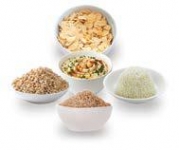
Healthy Diet
A healthy well-balanced meal consists appropriate amount of food and fluids to provide adequate amount of nutrition and energy to support normal growth and development. The major components of a well-balanced meal are carbs, proteins and fat.
Diabetic Diet
Dietary measures are an essential part of the treatment of diabetic patients, whether they are on diet alone or any oral medications or Insulin.
There is no common diet for all people with diabetes. A diet plan for diabetic patient is a guiding tool and it is individualized. It tells them how much of food and what kind of food one can choose to eat in their main meal as well at snack times. A good diabetic meal plan should be tailored with the schedule and eating habits of a diabetic individuals.
To effectively manage diabetes, one should understand how food and nutrition affect the body. Every diabetic must know about the quantity (portions) and food varieties that impact on their blood glucose value. In general a diabetic diet is based on eating three meals a day at regular times. It will help to utilize the insulin in a better way which is either produced by the body or administered as injection.
Carbohydrates, fat and protein need to be balanced to ensure blood sugar levels stay as stable as possible. (This is particularly important for people with Type 1 diabetes.)
Carbohydrates are the most important source of energy. They are divided in to 2 major groups as refined (or) simple carbs and complex carbs. The refined one raise the blood glucose levels faster and higher in the body compare to complex carbs.
Protein are vital to any living organism. They are the important constituent of tissue and cells of the body. It does not raise the blood glucose during absorption as carbs.
Fat is one of the important component since it serves a number of functions in the body. There are 2 major types of fat saturated and unsaturated. The unsaturated fat has more benefits than saturated fat.
You must be aware about the following:
Rate Your Plate:
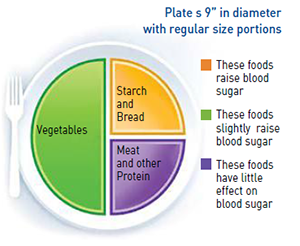
In essence, it focuses on eating more vegetables. When preparing your plate, fill one-half with non-starchy vegetables, one-quarter of it with a protein, and the last quarter with whole grain cereal or starchy food.
It is a ranking of foods based on the postprandial blood glucose response compared with a reference food. Consumption of a low glycemic index foods helps in control of blood glucose levels.
Glycemic Index:
It is a ranking of foods based on the postprandial blood glucose response compared with a reference food. Consumption of a low glycemic index foods helps in control of blood glucose levels.
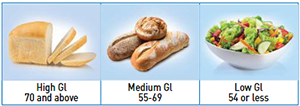
Carbohydrate Counting:
A diabetic person needs to keep a track of the amount of carbohydrates consumed. Since it will help them to maintained blood glucose levels within the normal limits.
Food Exchange list:
The food exchange list can help you to plan main meals and snacks. The list is organized by categories such as carbohydrates, vegetable, fruits, protein, and fats group.
“Smart choices today keeps you healthy in future”Carbohydrate Counting by Food Group
1. Starch/Grains List
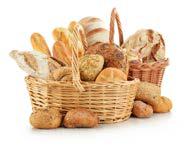
| Breads | |
|---|---|
| Bread (white, wheat, whole grain) | 1 slice |
| Chappathi (6” inch diameter) | 1 piece |
| Dosa (10 “ inch diameter) | 1 piece |
| Iddly (medium size) | 1 piece |
| Pita bread (qubz)/ hamburger | ½ |
| Pau/dinner roll | 1 |
| Rotti (Bajra,Makai,Jowar, Ragi) | 1/2 |
| Regag | 1/3 |
| Soup stick (or) kaak (10 cm) | 1 |
| Whole wheat flour | 25 gms |
| All-purpose flour | 25 gms |
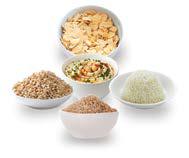
| Cereals/Grains/Legumes | |
|---|---|
| Barley | 1/3 cup |
| Brown rice (cooked) | 1/3 cup |
| White rice (cooked) | 1/3 cup |
| Hummus | 1/3 cup |
| Oatmeal (cooked) | 3/4 cup |
| Bran flakes | 1/2 |
| Bulgur (cooked) | 1/2 |
| Couscous | 1/2 |
| Cornflakes | 2/3 |
| Dhal kichadi | 1/2 |
| Freekha | 1/2 cup |
| Pasta (cooked) | 1/2 cup |
| Puttu (rice, ragi,wheat) | 1/2 cup |
| Rawa uppma (or) poha | 1/2 cup |
| Lentils/beans/foul/dhal | 1/2 cup |
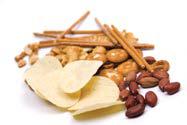
| Snacks & Crackers | |
|---|---|
| Potato chips (fat free) | 20 gms |
| Popcorn (fat free) | 3 cups |
| Puffed rice | 1 cup |
| Rusks | 2 nos |
| Saltines | 6 nos |
| French fries | 10 strips |
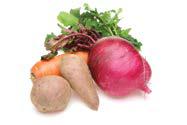
| Starchy Vegetables | |
|---|---|
| Carrot (medium) | 2 |
| Chestnut | 3 pieces |
| Corn | 1/2 cup |
| Corn cob 6 inch | 1 |
| Plantain | 1/2 cup |
| Potato (90 gms) | 1 small |
| Potato mashed | 1/2 cup |
| Sweet potato | 1/3 cup |
| Squash | 3/4 cup |
| Yam | 1/3 cup |
2. Vegetables List
1 non starchy vegetables exchange is equal to 5 gms of carbohydrates, 25 calories.
| Vegetable Exchanges | |
|---|---|
| Raw vegetables | 1 cup |
| Non starchy cooked vegetable | 1/2 cup |
| Vegetable soup | 1 cup |
3. Fruits List
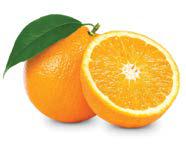
1 fruit exchanges equals 15 gms of carbohydrate, 60 calories
| Fruit Exchanges | |
|---|---|
| Apple | 1 |
| Banana (small) | 1 |
| Small mango (½ cup) | 1 |
| kiwi | 1 |
| Peach | 1 |
| Pear | 1 |
| Orange(small) | 1 |
| Custard apple | 1 |
| Nectarine (small) | 1 |
| Plums (small) | 2 |
| Figs fresh (medium) | 2 |
| Tangerines (small) | 2 |
| Dates | 2-3 |
| loqat | 4 |
| Whole apricots (fresh) | 4 |
| Jambu | 6 |
| Halves dried apricots | 8 |
| Cherries | 15 |
| Grapes | 15 |
| Strawberries | 4 nos |
| Canned pineapple | 1/2 cup |
| Grapefruit | 1/2 piece |
| Canned apricots | 1/2 cup |
| Canned peaches/pears | 1/2 cup |
| Fruit cocktail | 1/2 cup |
| Blueberries | 3/4 cup |
| Fresh pineapple | 3/4 cup |
| Mandarin oranges | 3/4 cup |
| Watermelon cubes | 1 cup |
| Dried figs | 1/2 cup |
| Raisins | 3 tabs |
| Apple Juice | 1/2 cup |
| Grape juice | 1/3 cup |
| Grapefruit juice | 1/2 cup |
| Guava juice | 1/2 cup |
| Mango juice | 1/3 cup |
| Orange juice | 1/2 cup |
| Pineapple juice | 1/2 cup |
| Prune juice | 1/3 cup |
4. Milk List
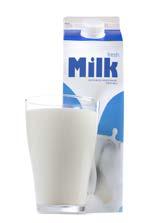
1 milk exchanges equals 12 gms of carbohydrates, 120 calories
| Milk Exchanges | |
|---|---|
| Low fat milk | 1 cup |
| Canned evaporated milk | 1/2 cup |
| Soy milk | 1 cup |
| Low fat buttermilk | 1 cup |
| Low fat yoghurt | 3/4 cup |
| Fruit flavored yogurt, low fat | 1 cup |
| Dry non-fat milk powder | 2 tbs |
5. Meat List
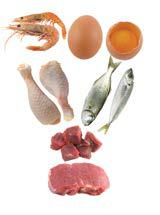
1 meat exchange contains 0 carbohydrates, 55-100 calories.
| Meat Exchanges | |
|---|---|
| Lean meat | 30 gms |
| Chicken breast | 30 gms |
| Salmon fish | 30 gms |
| Tuna in water | 30 gms |
| Ground meat | 2 tbs |
| Steak/beef/veal | 30 gms |
| Egg whites | 2 nos |
| Whole egg | 1 |
| Low fat cottage cheese | 60 gms |
6. Fat List
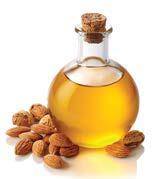
1 fat exchange also contains 0 carbohydrate,45 calories
| Fat Exchanges | |
|---|---|
| Oil (sunflower, corn, soy bean, olive) | 1 tsp |
| Sesame seeds | 2 tsp |
| Low fat mayonnaise | 1 tabs |
| Coconut milk | 2 tabs |
| Pumpkin/sunflower seeds | 1 tabs |
| Sour cream (reduced fat) | 2 tabs |
| SSalad dressing (low fat) | 2 tabs |
| Olives small | 8 |
| Olives big | 5 |
| Almonds | 7 |
| Peanuts (or) mixed nuts. | 10 |
| Whole walnuts | 2 |
Healthy Eating Habits
- Take the time to fully enjoy your food as you eat it.
- Eating too fast or when your attention is elsewhere may lead to eating too many calories.
- Pay attention to hunger and fullness cues before, during, and after meals.
- Try to eat vegetables, fruits, whole grains, more often and fat-free or 1% milk and dairy products & make them the basis for meals and snacks.
- Drink plenty of water (1.5-2 liter) instead of sugary drinks.
Say “No” to
- Sugar, jam, jelly honey, sweets, chocolate, candies, ice cream, cakes, all kind of carbonated beverages containing sugar.
- Fried foods, junk foods such as and pizza, and fatty meats like ribs, sausages, bacon, and hot dogs and oversized portions.
- Cream soups, soups with oils, soup made from stocks containing meat fat.
- Any fried fatty or heavily marbled meat, fish/poultry, eggs fried in butter, oil, margarine.
Exercise
- The health benefits of regular exercise and physical activity are hard to ignore. Everyone benefits from exercise, regardless of age, sex or physical ability. Exercise and physical activity are a great way to feel better, boost your health.
- Exercise is also very important for diabetics. Exercise can help improve your blood sugar control, boost your overall fitness, and reduce your risk of heart disease and stroke.
- Do not limit your daily activity to the exercise sessions. Look for ways to be more active throughout the day. For example, take the stairs, walk with your family, park away from the entrance, and/or ride a bicycle with your children.
- What should I do before exercise?
- Check with your health care provider to find out which activities will be safe and appropriate for you. Test your blood sugar 30 minutes before exercise.
| Blood sugar values | Advice |
|---|---|
| less than 100mg/dL (5.5mmol/L) | Your blood sugar is too low for exercise. Take a snack or a meal before exercise like yogurt with crackers or half a sandwich with a ½ cup of juice, |
| 100-250 mg/dL (5.5 - 13.8 mmol/L) | You are good to go |
| >250 mg/dL (13.8 mmol/L) | Do not exercise |
How much should I exercise?

To improve blood sugar and reduce risk of heart disease, it is recommend to exercise at least 150 min/week of aerobic physical activity. The physical activity should be distributed over at least 3 days/week and with no more than 2 consecutive days without physical activity.
Over time, try to work yourself up to an exercise routine of 30 minutes a day most days of the week. For weight loss, exercise around 7 hours/week of moderate or vigorous physical activity is best.
Try to perform resistance exercise (hand weights, elastic bands, or weight machines) three times a week, targeting all major muscle groups.
What should I do during exercise?
During exercise, low blood sugar is sometimes a concern. Ideally, blood sugar should be measured every 30 minutes especially if you are initiating exercise for the first time, increasing the intensity or duration of exercise, or trying a new activity.
This is not practical; however, you can do it at the beginning only. With time you will know your body more and how it will respond to exercise.
Keep a bottle of juice with you. In case you of any symptoms of hypoglycemia, drink around 130 ml of juice (1/2 cup), and then check your blood glucose after 15 minutes. Repeat as needed until your blood sugar reaches at least 70 mg/dL (3.8mmol/L).
What should I do after exercise?
Check your blood glucose as soon as you finish exercise as advised by your physician. Consume a meal with a complex carbohydrate (like rice, legumes) within 1 hour of exercise.
Hypoglycemia
What is hypoglycemia?
Hypoglycemia is a condition characterized by abnormally low blood glucose levels, usually less than 70 mg/dL (3.8 mmol/L) (measured using dextrose machine).
What are the Signs and Symptoms of Hypoglycemia?
- Dizziness
- Sweating, chills and clamminess
- Hunger and nausea
- Rapid heartbeat
- Blurred vision
- Drowsiness and sleepiness
- Inability to concentrate
- Tingling or numbness in the lips or tongue
- Irritability and anger
- Seizures
- Loss of consciousness
What could be the causes of hypoglycemia?
- Inadequate intake of carbohydrate (food) due to any reason.
- Delay or omission of a snack or a main meal.
- Excessive intake of medication (Insulin (or) Oral Hypoglycemic Agents).
- Excessive intake of alcohol.
- Exercising on an empty stomach.
- Severe infection
How should I treat hypoglycemia?
- Take a quick acting carbohydrate such as glucose tablets, 1/2 cup of juice or regular soda (not diet), or 1 tablespoon of honey
- Check your blood glucose after 15 minutes
- Repeat step 1 again if blood sugar remains below 70mg/dL (3.8 mmol/L)
- Once blood glucose returns to normal (4.4 mmol/L) eat a small snack like half a sandwich or yoghurt and nuts within maximum 30 minutes to 1 hour. Otherwise, consume a complete meal.
- Consult your doctor if your symptoms persist or your blood glu-cose levels are not elevated again.
How can I prevent hypoglycemia in the future?
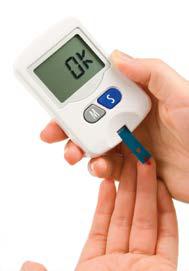
- Consume adequate meals and snacks as prescribed by your dietitian.
- Adhere to regular meal timings.
- Include a complex carbohydrate in every meal and snack as
- Schedule exercise between meals and not on an empty stomach.
Visit the dietitian’s clinic to get a personalized diet plan based on your age,height, weight, and other medical conditions.
Reference:
http://www.diabetes.org/food-and-fitness/food/planning-meals/diabetes-meal-plans-and-a-healthy-diet.html
http://www.eatright.org/resource/health/diseases-and-conditions/diabetes/diabetes-and-diet
http://www.mayoclinic.org/diseases-conditions/diabetes/in-depth/diabetes-diet/art-20044295
Sigal R. J. et al. Physical Activity/Exercise and Type 2 Diabetes: A consensus statement from the American Diabetes Association. Diabetes Care. 2006; 29(6): 1433-1438. https://doi.org/10.2337/dc06-9910
http://www.diabetes.org/living-with-diabetes/treatment-and-care/blood-glucose-control/hypoglycemia-low-blood.html?referrer=https://www.google.ae/



